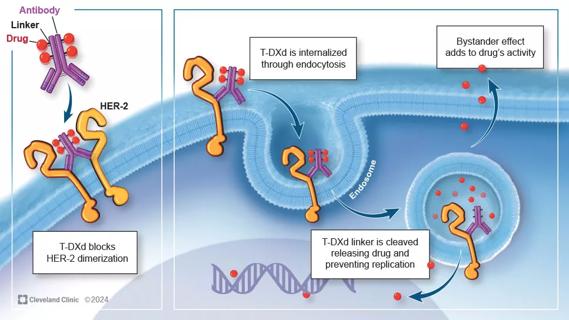Data can be reassuring to patients

Giving patients their one, two, three and five-year survival odds from the date of cancer surgery is a normal, if often distressing, part of the discussions that take place around the diagnosis and treatment of rectal cancer.
Advertisement
Cleveland Clinic is a non-profit academic medical center. Advertising on our site helps support our mission. We do not endorse non-Cleveland Clinic products or services. Policy
But just as life insurance actuarial tables account for how lifespan predictions for an individual shift over time, we should account for shifting odds of cancer-free survival as a patient lives past each of these milestones. Colorectal surgeon Matthew Kalady, MD, and his fellow researchers set out to discover what these shifting odds are and what they mean for patients receiving neoadjuvant chemoradiation (nCRT) with proctectomy.
What they found was that at the most extreme end, the variance could be substantial. “For example, a patient with poor prognostic factors noted at the time of surgery may only have a projected 56 percent chance of being alive at five years. However, once they get beyond a certain survival milestone, their chance at long-term survival is quite good, nearly 80 percent. This difference has both psychological and clinical repercussions.”
“Researchers have studied the data and calculated these percentages for other cancers, such as liver cancer and stage IV colon cancer, but to my knowledge, this is the first time we have compiled this information on rectal cancer patients,” Dr. Kalady explains. He and his coauthors assembled data on 545 patients receiving combined nCRT and surgery. They used the patients’ actual disease-free survival (DFS) data as a basis for estimating three-year conditional disease-free survival (cDFS) for the nCRT population as a whole, and for various subpopulations. Tumor regression, pathologic stage, margin status, differentiation and procedure type (low anterior vs. abdominoperineal resection) were associated with DFS on multivariable analysis.
Advertisement
While the estimates of disease-free survival for an additional three years after surgery start at the same percentage (71.4%), a dynamic look at survival odds (cDFS) revealed actual rates of 75 percent, 83 percent and 82 percent at one, three and five years, compared with the static (DFS) estimates of 89 percent, 71 percent and 63 percent, respectively, which are what physicians currently communicate to patients.
The breakdown of data by categories enabled an incisive view of which factors weigh most heavily when determining survival rates. “For example, we found that pathologic stage and differentiation had a less marked impact on survival than tumor regression over time,” Dr. Kalady notes.
Aggregating this kind of data enables clinicians to give their patients a clearer picture of what they can expect, which may influence choices related to retirement, estate planning and other life plans. Plus it may simply be a welcome source of encouragement. “How cDFS estimates improve over time can be great news that we just haven’t been sharing with our patients because we didn’t have the data. It is reassuring for patients to know their expected outcome and key time milestones after which the chance of their cancer returning decreases,” Dr. Kalady reflects.
Dr. Kalady and his fellow researchers presented their study Sunday at the 2018 American Society of Colon and Rectal Surgeons Annual Scientific Meeting in Nashville.
Advertisement
Advertisement

First-of-its-kind research investigates the viability of standard screening to reduce the burden of late-stage cancer diagnoses

Global R&D efforts expanding first-line and relapse therapy options for patients

Study demonstrates ability to reduce patients’ reliance on phlebotomies to stabilize hematocrit levels

A case study on the value of access to novel therapies through clinical trials

Findings highlight an association between obesity and an increased incidence of moderate-severe disease

Cleveland Clinic Cancer Institute takes multi-faceted approach to increasing clinical trial access 23456

Key learnings from DESTINY trials

Overall survival in patients treated since 2008 is nearly 20% higher than in earlier patients